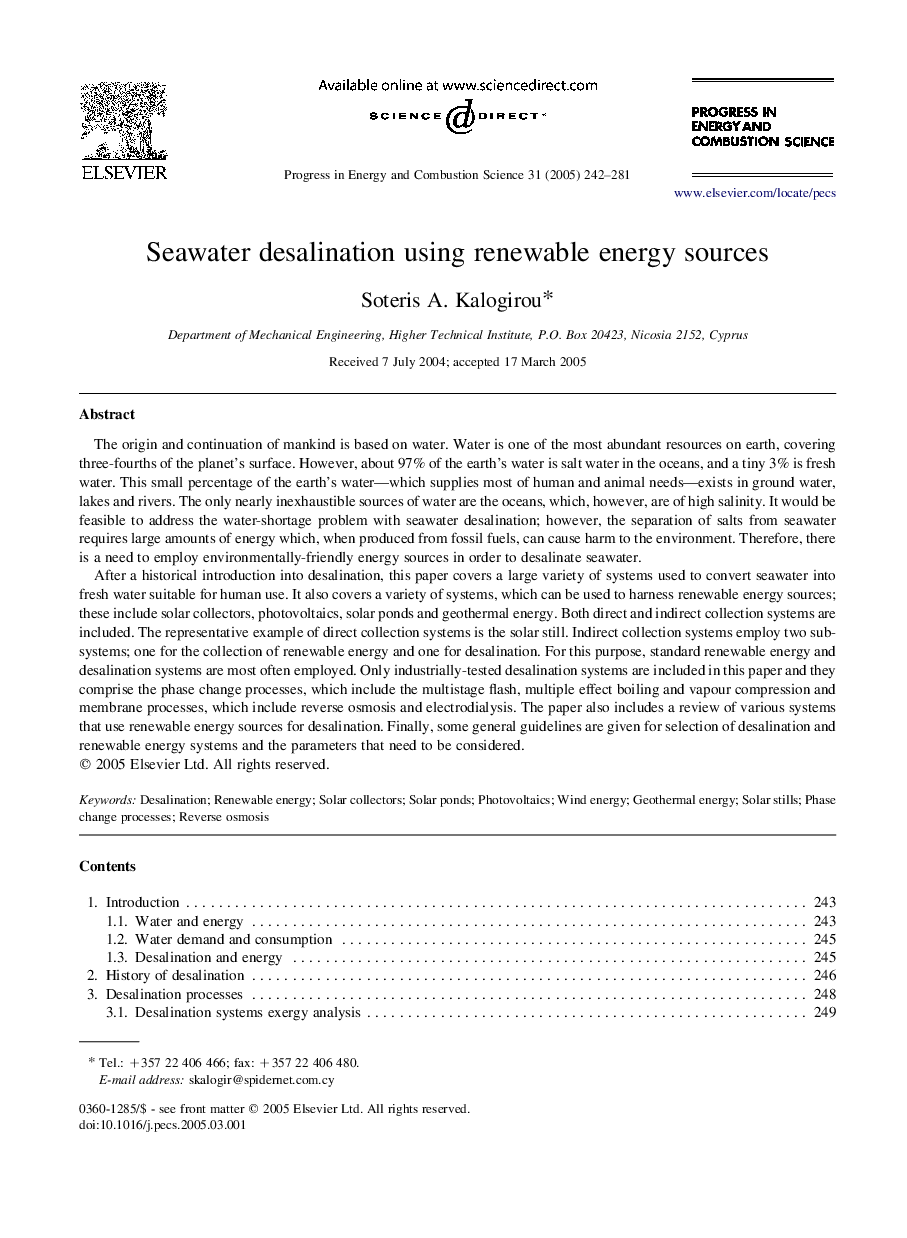| Article ID | Journal | Published Year | Pages | File Type |
|---|---|---|---|---|
| 10281595 | Progress in Energy and Combustion Science | 2005 | 40 Pages |
Abstract
After a historical introduction into desalination, this paper covers a large variety of systems used to convert seawater into fresh water suitable for human use. It also covers a variety of systems, which can be used to harness renewable energy sources; these include solar collectors, photovoltaics, solar ponds and geothermal energy. Both direct and indirect collection systems are included. The representative example of direct collection systems is the solar still. Indirect collection systems employ two sub-systems; one for the collection of renewable energy and one for desalination. For this purpose, standard renewable energy and desalination systems are most often employed. Only industrially-tested desalination systems are included in this paper and they comprise the phase change processes, which include the multistage flash, multiple effect boiling and vapour compression and membrane processes, which include reverse osmosis and electrodialysis. The paper also includes a review of various systems that use renewable energy sources for desalination. Finally, some general guidelines are given for selection of desalination and renewable energy systems and the parameters that need to be considered.
Keywords
Related Topics
Physical Sciences and Engineering
Chemical Engineering
Chemical Engineering (General)
Authors
Soteris A. Kalogirou,
